Content
Hokkaido Pumpkin is a compact, portioned pumpkin especially popular in Japan. In France, this variety is called Potimaron. Its taste differs from the traditional pumpkin and resembles the taste of roasted chestnut with a slight hint of nuts. A feature of the Hokkaido variety is also the possibility of eating the fruit along with the peel, which becomes soft when cooked.
Description of Japanese pumpkin Hokkaido
The Hokkaido cultivar belongs to the herbaceous plant of the Pumpkin family. Belongs to the Japanese selection. From the photo of the Hokkaido pumpkin, you can see that it forms a powerful, strong and climbing plant with long vines. Trellis cultivation is suitable for this crop. The stems are rounded, which grow 6-8 m.
The Hokkaido cultivar belongs to large-fruited pumpkins, which can be distinguished from others by the rounded stalk. It blooms with large, numerous, yellow flowers. The leaves of the Hokkaido cultivar are large, heart-shaped. The variety is distinguished by its early ripening period - about 3 months. Hokkaido pumpkins can be stored for up to 10 months while retaining their flavor.
A variety of Japanese Hokkaido pumpkin, the seeds of which can be found in Russia, is the popular Ishiki Kuri Hokkaido f1 hybrid. This pumpkin is distinguished by its bright orange color, pear-shaped fruit and high yields. The hybrid is recommended as a vegetable for autumn consumption. The fruits can be stored for 6 months. During storage, their taste becomes simpler and the vegetables start to spoil.
The Ishiki Kuri variety is included in the Belarusian State Register of Breeding Achievements, and is absent in the Russian one.
Description of fruits
Ripe Hokkaido pumpkins can be gray, green, yellow or orange in color. In shape in the form of a slightly flattened ball or drop-shaped. All varieties of Hokkaido pumpkin are very decorative. The peel is firm, the flesh is sweet.
Ishiki Kuri Hokkaido f1 pumpkin, according to reviews, has a dense, starchy pulp. When processed, the pulp becomes pasty, resembling potato in consistency. No fiber in the pulp is felt. The sugar and liquid content is low. Therefore, the pumpkin tastes not very sweet and even insipid.
Ishiki Kuri's rind is thin, without pronounced ridges. But it takes effort to cut the fruit. The peel becomes completely soft when cooked. Fruit weight - from 1.2 to 1.7 kg. The diameter is about 16 cm. The fruits of Ishiki Kuri Hokkaido f1 are also highly decorative. They are characterized by an oblong neck and a protruding, not depressed peduncle. Deformations may occur on the peel.
Characteristics of varieties
Ishiki Kuri Hokkaido f1 pumpkin is well adapted to weather conditions. The plant is hardy, drought-resistant. Suitable for growing in warm and temperate climates. The hybrid is highly productive. Each vine produces several fruits. One plant produces 10 small pumpkins.
The seed growth is medium. In warm regions, seeds can be planted by direct sowing in the ground in May. In other regions, crops are grown through seedlings. In order for the fruits to be large and have time to ripen, it is necessary to limit the growth of the lashes. Fruits appear in late August - early September.
Ishiki Kuri Hokkaido f1 fruits are recommended to be removed as they ripen, so they will taste better.
Hokkaido pumpkin can be grown in vertical culture.Bright pumpkins look very decorative against the background of large, green leaves. The plant is decorated with southern fences, small trees that will not shade the vines.
Pest and disease resistance
Hokkaido and Ishiki Kuri pumpkins show general resistance to typical pumpkin diseases. The culture shows the best properties when grown in a sunny area. In shaded or wetlands, plants can infect aphids and fungal diseases.
To prevent diseases, crop rotation of crops is observed, planting plants in rested soil or after growing legumes and cabbage. Growing healthy plants is facilitated by a large planting area.
Advantages and disadvantages
Hokkaido pumpkin has a rich vitamin composition, as well as a high content of trace elements and amino acids. It is a valuable product for healthy and dietary nutrition. A feature of the Ishiki Kuri Hokkaido f1 variety is the ability to eat fresh fruits. The portion size is easy to use. Vegetables of this variety can be eaten with the peel.
In the recipes, Hokkaido pumpkin is suggested to be fried like potatoes, baked in slices, and cooked in pasty soups. Whole pumpkins are used as stuffing pots in desserts and main courses.
The disadvantages of the Ishiki Kuri Hokkaido f1 variety include the fact that the fruits are not suitable for cooking candied fruits. And the seeds are unsuitable for processing and eating.
Growing technology
Japanese pumpkin Hokkaido is a culture demanding heat and light. Place it in areas that are well lit throughout the day. For a highly climbing plant, trellises, cones or huts are installed. For growth, the plantings of this variety need many nutrients, which they take from the soil. Therefore, chernozems, sandy loam soils and light loams are more suitable for cultivation.
The Hokkaido cultivar has one of the shortest ripening periods for pumpkin crops - 95-100 days. Seeds can be planted by direct sowing into the ground. For the initial phase of growth, a shelter is created for the sprouts in the form of a small greenhouse. Seeds germinate at a temperature of + 14 ° C. But the optimal temperature is + 20 ... + 25 ° C, at which the sprouts appear in a week.
Even small frosts are detrimental to the plant. Therefore, in regions with a cold spring, the Hokkaido cultivar is grown through seedlings. Sowing begins at the end of April.
The melon culture does not tolerate well when its root system is disturbed, so it is better to grow seedlings in peat pots. You can put 2 seeds in one container. A sowing hole is made 5-10 cm deep. When two sprouts germinate, one seedling is left, which is stronger. A plant with 4-5 true leaves is transplanted into open ground.
When transplanting, add to the well:
- 150 g of ash;
- 100 g sawdust;
- 50 g superphosphate.
After transplanting, the plants are watered with any growth stimulant.
The pumpkin does not like thickened plantings, therefore, in the open field, each plant is planted with a distance of 1 m from each other. And also away from zucchini. After tying several fruits, the main stem is pinched, leaving 4-5 leaves at the top.
Pumpkin is drought tolerant due to its developed root system. It needs to be watered infrequently, but abundantly. Plantings of the Hokkaido variety are watered once a week, using 20-30 liters of water per 1 sq. m.
When growing pumpkin, several additional fertilizing is required during the growing period. Top dressing is used in dry and liquid form.It is most favorable to alternate organic and mineral fertilizers.
Required fertilizers:
- nitrogen - they are introduced during planting, they provoke growth, prevent the wilting of the vegetative mass;
- phosphoric - introduced at the beginning of the formation of ovaries;
- potash - used during flowering.
Using liquid organic fertilizers, do not allow them to get on the leaves and stems.
It is not recommended to overexpose the pumpkin of the Hokkaido variety on the lash and collect it as it ripens. The last fruits are harvested before the onset of frost. The pumpkins are removed along with the stalk, being careful not to damage the peel. Thus, vegetables will be stored longer. Best of all, the pumpkin lies at a temperature of + 5 ... + 15C in a dark room. It is important during storage that the Hokkaido pumpkins do not come into contact with each other. It is recommended to store Ishiki Kuri pumpkins no longer than six months.
Conclusion
Hokkaido pumpkin became famous for Russian gardeners not so long ago. A variety of pumpkin culture that came from Japan is well acclimatized for Russian latitudes. Small portioned fruits are easy to use and contain a wide range of nutrients. Ishiki Kuri Hokkaido pumpkin is recommended for balanced and dietary nutrition.
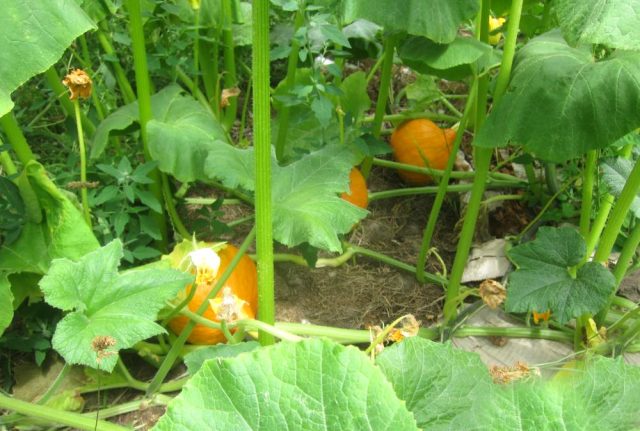
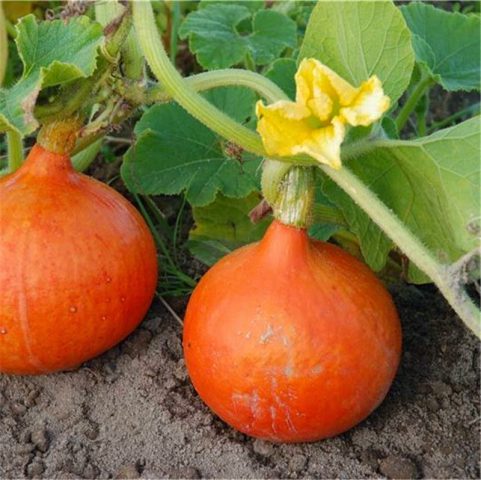
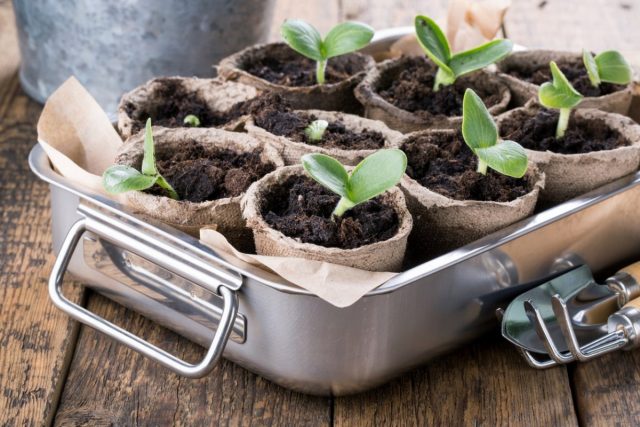


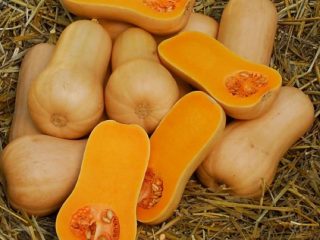
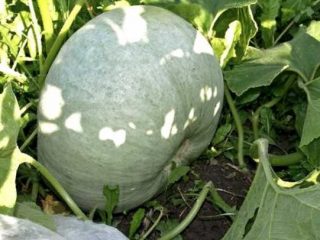





I really liked this pumpkin - very fruitful, beautiful !!!!